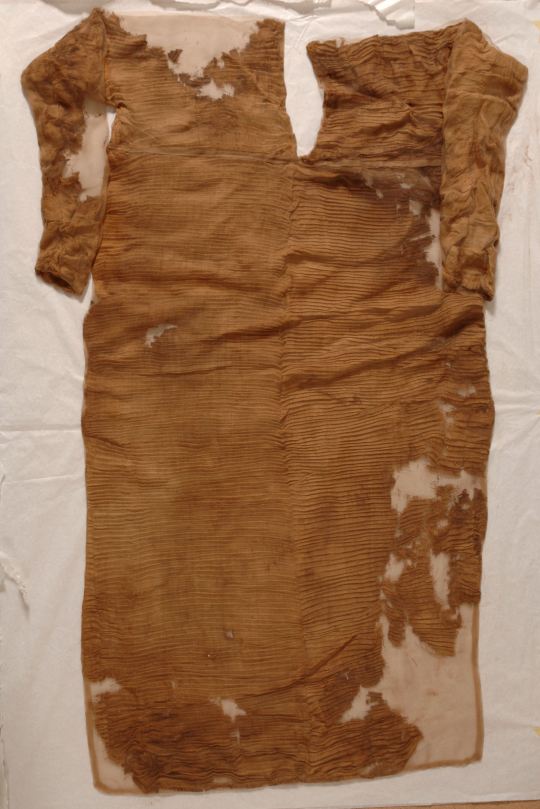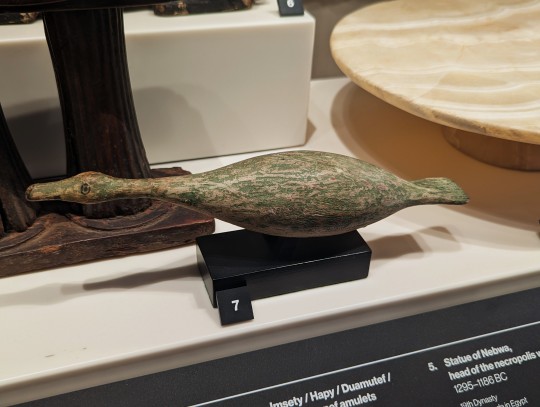#Asyut
Text

Asyut Province of Egypt
Egyptian vintage postcard
#asyut#tarjeta#postkaart#sepia#carte postale#ansichtskarte#briefkaart#photo#photography#postal#postkarte#egyptian#vintage#province#asyut province#postcard#historic#egypt#ephemera
5 notes
·
View notes
Text
Vial Automatic Sticker Labelling Machine in Egypt

Laxmi Pharma Equipment is Manufacturer, Supplier and Exporter of Vial Automatic Sticker Labelling Machine in Egypt.
Our Manufacturing Unit is in Ahmedabad, Gujarat, India.
Vial Automatic Sticker Labelling Machine Manufacturer specializes in designing, producing, and supplying machines that automatically apply adhesive labels to vials.
These machines are essential for industries such as pharmaceuticals, cosmetics, food and beverage, and healthcare, where precise and efficient labelling is crucial.
Our machine applies labels to vials with pinpoint accuracy, ensuring each label is perfectly aligned and securely affixed.
Boost your production efficiency with rapid labelling capabilities that keep your packaging line moving smoothly and quickly.
Features:
No change parts are required for change over of Vials size.
Synchronized speed of Label Dispensing, Conveyor and Pressing Device.
Easy to change label application height.
Self protected against any voltage fluctuations.
Suitable for On-Line Ink Jet and Contact Coding System.
Suitable for Partial, Full Wrap Around and Overlap Labeling.
High Production Speed up to 250 Vials/min.
PLC based system with touch screen HMI.
Conveyor & servo speed synchronized and controlled from HMI.
In built Speed Indicator & Counter.
There is no requirement of Oil or Grease for maintenance.
Online rejection system (if required).
Applications:
Pharmaceuticals
Laboratory Equipment
Food and Beverage
Cosmetics
Healthcare
Laxmi Pharma Equipment is an Exporter of Vial Automatic Sticker Labelling Machine in Egypt Including Cario, Alexandria, Giza, Shubra el-Khema, Port Said, Suez, EL mahalla el Kubra, El Mansoura, Tanta, Asyut, Fayoum, Zagazig, Ismailia, Khusus, Aswan, Damanhur, El- Minya, Damietta, Luxor, Qena, Beni Suef, Sohag, Shibin el-Kom, Hurghada, Banha, Mallawi.
For more information and inquiries, feel free to contact us.
View Product: Click Here
Read the full article
#Alexandria#Aswan#Asyut#Banha#BeniSuef#Cario#Damanhur#Damietta#ELmahallaelKubra#ElMansoura#El-Minya#Exporter#ExporterofVialAutomaticStickerLabellingMachineinEgypt#Fayoum#Giza#Gujarat#Hurghada#India#Ismailia#Khusus#LaxmiPharmaEquipment#Luxor#Mallawi#Manufacturer#ManufacturingUnitisinAhmedabad#PortSaid#Qena#Shibinel-Kom#Shubrael-Khema#Sohag
0 notes
Video
youtube
Al Farghal Mosque Masjid Al Farghal مسجد السلطان الفرغل اسيوط
0 notes
Text


Pleated Tunic - Museo Egizio Collection
Inventory Number: S. 7932/5
Old Kingdom, Dynasty 5-6, 2435–2118 BCE
Location Information: Asyut
Diagram Pictured From:
Borla, Matilde, “Pleated dresses from the Museo Egizio of Turin: study of the technical data of fabrics. Preliminary results”, in Antoine De Moor, Cäcilia Fluck, Petra Linscheid (eds), Textiles, Tools and Techniques Of the 1st Millennium AD from Egypt and neighbouring countries [ ... ], 2015, pp. 104-130
#pleated tunic#museo egizio#old kingdom#dynasty 5#dynasty 6#asyut#upper egypt#S. 7932/5#linens#OKlinens
1 note
·
View note
Text

Model of Nubian Archers
Middle Kingdom, 11th Dynasty, around 2000 BC.
From the Tomb of Mesehti in Asyut.
Now in the Egyptian Museum, Cairo. JE 30969
Read more
69 notes
·
View notes
Text

Wooden Goose Model from Asyut, Egypt dated between 2345 - 2181 BCE on display at the Burrell Collection in Glasgow, Scotland
Photographs taken by myself 2023
#art#archaeology#history#ancient#egypt#egyptian#bronze age#burrell collection#museum#glasgow#barbucomedie
61 notes
·
View notes
Text
Coptic Jewelry: broad collars
This is not a common example of jewelry in Coptic art or among material culture, but some depictions exist. These overlap with Byzantine imperial superhumerals and other design elements to a degree, but not entirely. For the purposes of this post, a broad collar is a necklace worn high on the chest that encircles the neck, designed to be of a width noticeably greater than that of a strand necklace. Commonly these may have beads or pendants on their bottom edge (true of both these and the Pharaonic broad collar).
I have no opinion on if these are an evolution of the Pharaonic broad collar, as I have no evidence for or against it. It is certainly possible, and I am curious as to where exactly the Byzantines got the superhumeral from (with Egypt potentially being an origin, as well as the cloud collar of East Asia. I consider the latter somewhat unlikely however, as the cloud collar was adopted in Persia and Turkey centuries later. Visually the styles are more strongly related to the cloud collar than the superhumeral and cloud collar- the aesthetic differences between the latter imply a degree of iteration that doesn't quite make sense given the trade routes and what I know of the material cultures of the trade intermediaries).

This gold one set with gems was reportedly found in Assuit, and has strong Byzantine artistic influences- it is thought the jewelry in the hoard it was part of was owned by someone with ties to the imperial court. It was made some time in the 3rd to 6th centuries AD, and probably hidden in the 7th century, never to be recovered by its owner.

This example was found along with the preceding one, and bears some resemblance to the modern bead net necklaces found in various parts of the world, including the bogma found in Egypt in Bahariya. The design elements here were present in Egypt for several centuries by the time the necklace was put in its eventual findspot.

This carved wood door is currently in the Brooklyn Museum, where it's dated to the 7th-11th century. The figure wears, among other things, a very large necklace of the type I defined. Interestingly, the necklace looks like it has a blue tinge- a common color for the Pharaonic broad collar was blue or turquoise, from faience beads. Coptic artifacts made of faience exist up until the 4th century, but are fairly uncommon compared to earlier periods. Potentially, I think her necklace could have been based on a depiction of a Pharaonic broad collar from a statue or temple- it is known Copts used the structure of temples into Christianization, sometimes carving over the walls or defacing pagan symbols. It's possible the artist saw a partial carving with remaining pigment and felt inspired. It is also possible this style of necklace was one worn at the time the door was made.




In addition to this, occasionally Coptic textiles depict necklaces that could be of the same style. Generally it is difficult to satisfactorily classify these necklaces as such due to the artistic limitations and stylistic choices- some may have been based on chokers, or jeweled decorative bands on the necklines of tunics.
Artifacts referenced:
https://colorsandstones.eu/2022/06/30/the-asyut-treasure-segmented-necklace-d-b/ & https://commons.m.wikimedia.org/wiki/Category:Asyut_Treasure- The Assiut treasure
https://www.brooklynmuseum.org/opencollection/objects/29386- door
https://art.rmngp.fr/fr/library/artworks/bande-decorative-dionysos-et-d-ariane_tapisserie-technique_laine-textile - textile bust of Ariadne
https://www.doaks.org/resources/textiles/catalogue/BZ.1929.1 - Hanging with Hestia Polyolbus
48 notes
·
View notes
Text

Wepwawet is an Egyptian god associated with war, protection, and the hunt. The name Wepwawet means "Opener of the Ways," and many consider him a god of possibilities. Wepwawet was originally a god of Upper Egypt, but was eventually honored throughout the country. He had a particular center of worship in the city of Lycopolis (Asyut).
Wepwawet is depicted here as a man with the head of a jackal. He carries a spear in one hand and the ankh, a symbol of life, in the other. Wepwawet may also be depicted in the full form of a jackal.
Wepwawet, opener of ways, granter of choices,
unfolder of options, I praise and honor you.
9 notes
·
View notes
Text

Heard of wooden statue, the treasurer Nakht, buried at Asyut in Middle Egypt, around 2000 BC.
15 notes
·
View notes
Text

Day 21
I'm back to work..., back to Asyut.
الطريق طويل جدا لسا قدامي كورسات كتير لسا بعد ال Javascript.
في Day 20 انا خلصت module جديد بتاع ال Data Structure. و حاليا هبدا في واحد جديد.
خلصت ٢٥ ساعه في الكورس و دلوقتي فاضل ٤٥ ساعه و لسا الطريق طويل 💔
We'll keep moving ❤️
15 notes
·
View notes
Text
Memorising governorates of Egypt with a mind palace

Image source
There are 27 governorates in Egypt. Here's how I memorise them:
Alexandria, Aswan = Alex in a swan costume in entrance
Asyut,Beheira = someone dippin their but in a lake by the phone shop
Beni Suef, Cairo = ben ten with a sword (sef in arabic) in cairo by the garage
Dakahlia, Damietta = white lady eating feta cheese by the pharmacy (dakahlia's capital is mansoura, which is famously full of "white" egyptians, damietta sounds like an egyptian brand of cheese)
Faiyum, Gharbia = a tree shade (Fai) to the west by the building
Giza, Ismailia = Ismael on top of pyramid by the tech store
Kafr El-Sheikh, Luxor = a sheikh in statue form (luxor famous for temples) by the bakers
Matrouh, Minya = king mina being kicked out of the lab
Monufia, New Valley = dad (from monufia) climbing a valley by the veggies seller
North Sinai, Port Said = a poor guy holding a sign high by the kiosk
Qalyubia, Qena = a tv turned upside down by the orphanage
Red Sea, Sharqia = a guy choking (sharaq) on red water by the corner
Sohag, South Sinai = horny dude holding a sign low by the school
Suez = a canal in the ruins of a building
8 notes
·
View notes
Text
Visual Inspection Conveyor in Egypt

Company Overview:
Laxmi Pharma Equipment, headquartered in India, is a prominent Manufacturer, Supplier, and Exporter of Visual Inspection Conveyor in Egypt.
Laxmi Pharma Equipment specializes in Visual Inspection Tables/Conveyor Units, essential equipment in the pharmaceutical industry for visually inspecting tablets, capsules, vials, ampoules, and other dosage forms.
These units facilitate the assessment of goods' quality, integrity, and compliance with industry standards and regulations in a controlled environment.
Features:
Well-illuminated work surface with uniform and glare-free lighting for optimal visibility.
Conveyor system for smooth product transport across the inspection table, with adjustable speed controls.
Lighting controls to adjust intensity and direction for optimal visibility during inspection.
Automated rejection or separate accumulation of products not meeting quality standards.
Intuitive interface for easy control of conveyor speed, lighting, and other settings.
Data recording capabilities for documenting inspection results and generating reports for quality control purposes.
Exporter of Coverage in Egypt:
Laxmi Pharma Equipment is Exporter of Visual Inspection Conveyor in Egypt like Cario, Alexandria, Giza, Shubra el-Khema, Port Said, Suez, EL mahalla el Kubra, El Mansoura, Tanta, Asyut, Fayoum, Zagazig, Ismailia, Khusus, Aswan, Damanhur, El- Minya, Damietta, Luxor, Qena, Beni Suef, Sohag, Shibin el-Kom, Hurghada, Banha, Malawi.
For further inquiries or to explore our product catalog, please don't hesitate to reach out to us using the provided contact information.
Read the full article
#Alexandria#Aswan#Asyut#Banha#BeniSuef#Cario#Damanhur#Damietta#Egypt#ELmahallaelKubra#ElMansoura#El-Minya#Exporter#ExporterofVisualInspectionConveyor#ExporterofVisualInspectionConveyorinEgypt#Fayoum#Giza#Hurghada#Ismailia#Khusus#Luxor#Malawi#Manufacturer#PortSaid#Qena#Shibinel-Kom#Shubrael-Khema#Sohag#Suez#Supplier
0 notes
Text

~ "Asyut bracelet, part of a large golden Byzantine treasure found in 1909 near Asyut, Middle Egypt. The exact location and circumstances of the find remain obscure as the treasure was not excavated by professional archaeologists. Certain pieces of the treasure were embossed with medallions of the Byzantine Emperor, which evidences a clear link to the imperial court of Constantinople. The whole treasure was possibly brought from the capital to the supposedly safer environment of Egypt in the early 7th century, before it was hidden there from the Arab invasions in the mid 7th century." ~
5 notes
·
View notes
Text


Pleated Tunic - Museo Egizio Collection
Inventory Number: S. 7932/4
Old Kingdom, Dynasty 5-6, 2435–2118 BCE
Location Information: Asyut
Diagram pictured from:
Borla, Matilde, “Pleated dresses from the Museo Egizio of Turin: study of the technical data of fabrics. Preliminary results”, in Antoine De Moor, Cäcilia Fluck, Petra Linscheid (eds), Textiles, Tools and Techniques Of the 1st Millennium AD from Egypt and neighbouring countries [ ... ], 2015, pp. 104-130, fig. p. 104
#pleated tunic#museo egizio#old kingdom#dynasty 5#dynasty 6#asyut#upper egypt#middle egypt#S. 7932/4#linens#OKlinens
0 notes
Text

just the 2 of us :-)
4 notes
·
View notes
